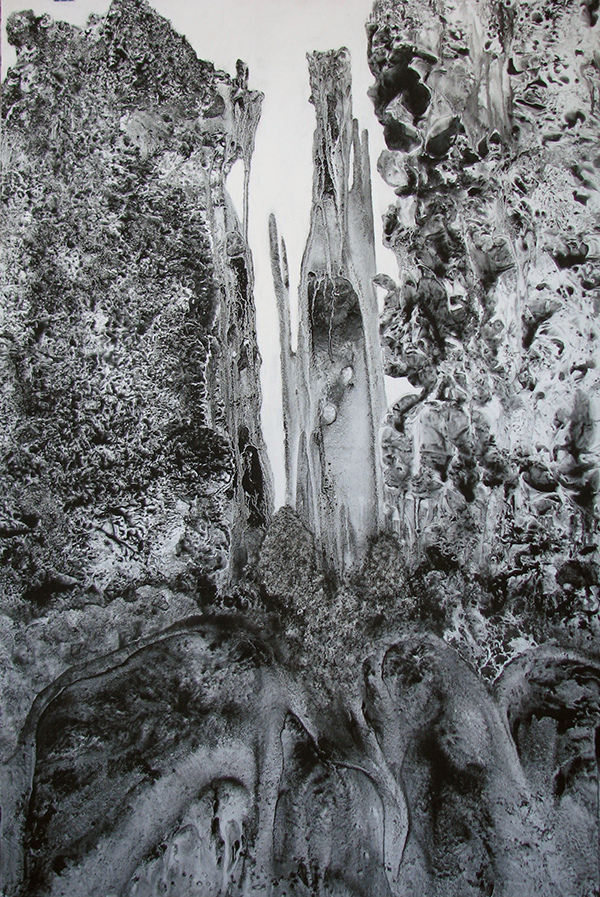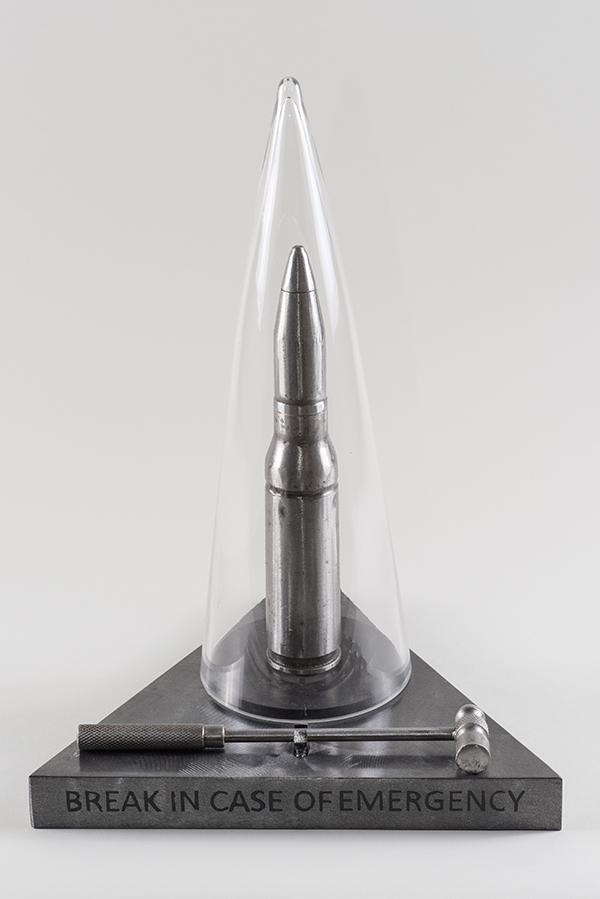Two Bay Area artists, the sculptor/painter/collagist Bella Feldman and the draftsman (for lack of a better term) Ron Weil, show that intelligence, passion and craftsmanship are as timely as ever.
Feldman, whose 50-year retrospective at Richmond Art Center in 2013 was such an eye-opener, deserves serious attention from one of our local museums. In its severe beauty, its dark humor, and imaginative and thematic richness, developed from the creative process, her work recalls that of Jay De Feo, who was given a magnificent retrospective at SFMOMA some years back.
On view at Vessel are six sculptures and a scattering of collages that represent both her social commentary, influenced by surrealism, and her playful abstraction, deriving from cubism and constructivism. Five of the sculptures are from Feldman’s War Toys series, insectile combinations of spiky steel and blown glass inspired by America’s oil wars, the series inspired in part by Bush 41’s extolling of the moral virtues of the Patriot Missile in 1989, and in counterpart by Bush 43 in 2003 as the search for weapons of mass destruction led the Anglo-American oil alliance back to new confrontation and conflagration in Iraq.

Ron Weil, 2015-223, 2015.
Feldman’s sculptures are witty and beautiful, as well as Boschian-scary, reflecting our ambivalence toward magical technology and its sometimes inglorious uses. Break in Case of Emergency (2015) presents an artillery shell like the spire of a church or minaret of a mosque, beneath a tall glass cone, with a hammer mounted on a triangular base; Caliper (2015) mounts a glass shell, like a missile, atop a calibrated circular base recalling San Francisco Civil War batteries. Sherman and Hornet (both 2015), named after a tank and a fighter jet, respectively, confine glass bulbs within wheeled metal frameworks bristling with spikes and warheads. Robert E. Lee said, “It is well that war is so terrible—otherwise we would grow too fond of it.” Feldman—and doesn’t “bella” mean both beautiful and war?—depicts our terrible fondness, with humor and insight. A group of small collages shows Feldman in a more playful but still critical vein; comprised of what appear to be 19th-century engravings (or copies of them), in black, white and red, they elaborate the absurd and mysterious universe of the anti-Victorian, anti-rational Dadaists and Surrealists.
Weil’s charcoal drawings on paper, with their organic textures and forms, look at first quite different from Feldman’s comical machines of destruction, but they are similarly powerful on first glance and provocative afterward. Weil employs powdered charcoal, fluids (now including acrylic medium) and various means of application to create semi-abstract imagery that suggests geology, botany and biology. That Weil can create such evocative ambiguities as the landscape-like 2015-164, 2015-223 or 2015-228 (all 2015), or the biomorphic gestural abstraction of 2015-57, 2015-111, or 2015-37 (all 2015), given his go-for-broke approach, harnessing is a miracle. The closest comparison I can think of is Max Ernst’s magisterially subversive frottage drawings and decalcomania paintings of the 1920s through the 1940s: art materials allowed to be themselves, organically, transformed into compelling metaphors.


